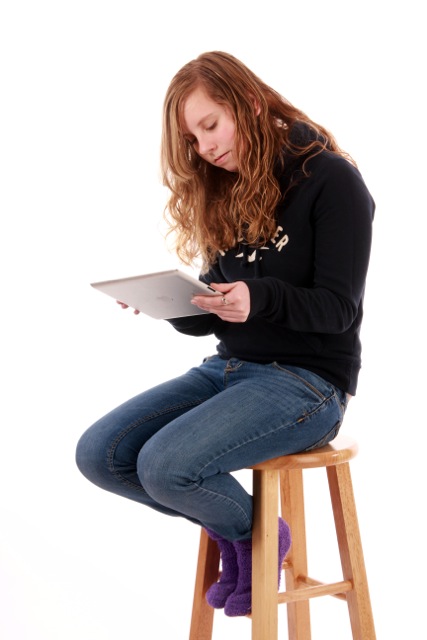Oculomotor Therapy for the Apple iPad
These programs have been created by a developmental optometrist, a neuropsychologist, a special education teacher, a computer game programmer, and several young adults who use the iPad regularly to play computer games. These programs are only designed for use by those individuals who have had them prescribed for them by a Doctor familiar with vision dysfunction and visual rehabilitation. Each time you use these programs, the Doctor who prescribed them can view your performance and make any necessary changes to the therapy program
Resources
Patients with a user name and password can access OMT for the iPad
Oculomotor Therapy Program for the iPad
Oculomotor Therapy Program Allows Doctors to Prescribe Computer Games To Treat Visual Impairment
Specialists at NeuroSensory Center of Eastern Pennsylvania Developed System for Use With iPad

Children and adults suffering from visual impairment due to autism, brain injury, stroke or a variety of other conditions can get help from a new program using specially designed games and activities played on an iPad.
The Oculomotor Therapy Program uses a Web-based application in which patients access a variety of games for iPad that treat visual system dysfunction and strengthen visual skills. The application was created by a developmental optometrist, Dr. Jeffrey Becker, and neuropsychologist Dr. Robert Bohlander, who also is a member of the psychology faculty at Wilkes University. The partners treat patients at the NeuroSensory Center of Eastern Pennsylvania in Kingston, Pa. The center is a specialty facility that offers diagnosis and treatment of disorders of the nervous system, such as autism, ADHD, concussion and head injury, migraines, stroke and functional vision disorders.
Becker and Bohlander partnered with a computer game programmer and a special education teacher to develop the iPad program. It is designed to be used by prescribing doctors treating patients with visual motor deficits and dysfunction related to visual closure, visual motor integration, visual tracking, eye-hand coordination, three-dimensional perception and other conditions causing visual impairment. The program combines the fun of playing a game with carefully monitored therapeutic benefits.
What separates the program from computer games available for recreational use is that the oculomotor therapy games are designed so that doctors can monitor patient progress and change the parameters of the therapy, such as speed and frequency. Because the application is Web-based, it is possible for doctors to assess progress in real time. Each time a patient uses the program, the prescribing doctor can track progress online and immediately adjust the prescribed game activities to match patient goals.
The Oculomotor Therapy Program has 16 game activities, each with eight different levels. Some examples of the games available in the system include:
• Planet Defense: The game requires visual fixation and peripheral awareness. The player fixates on the center of the screen as a color appears. The player must touch a color on the side of the screen that matches the one in the center. As the game progresses, colors appear more frequently and reaction time must improve to keep up.
• Asteroid Tracker: Gross and fine-motor control, visual-motor processing and visual attention are developed through the use of visual pursuit activities in this game. The player follows a moving target with the eyes and must shoot it down when it passes through a designated target area.
• Picture Reveal: This visual closure activity helps the patient understand that part of a picture can be assembled to reveal the whole picture. It helps with the reading process and the “gestalt” form of visual perception, in which individuals perceive parts of objects and form whole objects based on the parts.
• Robot Scanner: The game combines pursuit eye movements and visual fixation to help with skills related to reading, writing, attention and sensory integration.
• Finding RDS (Three Dimension): This program assists in the development of 3-d dimensional space and helps with spatial alignment and orientation – important for gross and fine motor control and spatial awareness
Patient access to the Oculomotor Therapy Program is available only through an approved doctor knowledgeable about vision function disorders. A list of approved doctors can be obtained from the NeuroSensory Center at info@keystonensc.com or by calling (570)763-0054.
